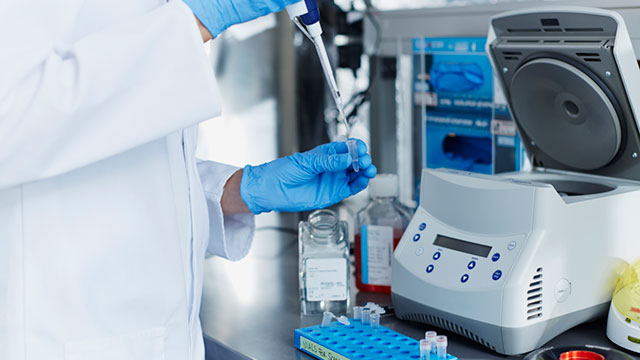In Centrifugation, Samples and Materials Must Work Together
It’s worth the trouble to match the optimal centrifuge tubes with a particular application.

Although nearly every lab uses a centrifuge for some processes, the technique for every application varies—especially when it comes to the tubes. In short, the sample being spun down must be compatible with the material used to make the tube. In a perfect world, the key constituents of a sample do not interact with the tube, but that’s not always how it works. It’s worth the trouble to match the optimal centrifuge tubes with a particular application.
It’s not just the sample of interest that matters when selecting an appropriate tube, but what’s in the sample as well. That might include a solvent or something to form a gradient during centrifugation. With salt solutions, compatibility doesn’t present much of an issue, if any. An alkaline solution, though, is not compatible with a polycarbonate tube. As a general rule, tubes should be tested for compatibility with a desired sample and protocol. Even the g-force or run time can impact how the tube and sample interact. For high-temperature centrifugation, for instance, stainless-steel or glass tubes work the best.
As a starting point to determine chemical and tube compatibility, see the Centrifuge Chemical Resistance Table2 prepared by Thermo Fisher Scientific (Waltham, MA).
Swaps for samples
The type of sample being used and the centrifugation protocol can necessitate swapping one kind of centrifuge tube for another. For example, DNA sticks to some materials, and most of the nucleic acid processing works best in polyallomer tubes.
There are other ways centrifuge tubes can capture some of a sample. Supriya Lath, professional environmental scientist at AECOM (Melbourne, Australia), and her colleagues wondered whether laboratory materials affect the analysis of perfluorooctanoic acid (PFOA), which is used in a range of industrial processes. This chemical is being replaced in some applications because of health concerns. Lath explains the rationale for this investigation: “Occurrence of sorption losses of [perfluoroalkyl and polyfluoroalkyl substances] (PFAS) analytes onto particular laboratory ware (e.g., glass containers) has been suggested in the published literature but has not been investigated in detail.”2 So, this group of scientists tested the loss of PFOA solutions in various labware, including glass and plastic centrifuge tubes. The loss was significant in tubes made of polypropylene, polystyrene, polycarbonate, and glass—as much as 45 percent, 35 percent, 31 percent, and 24 percent, respectively. “This study draws attention toward analytical bias that can occur due to sorption losses during routine procedures, and highlights the importance of testing the suitability of chosen laboratory ware for specific PFAS analytes of interest prior to experimental use,” Lath and her colleagues conclude.
Download Now: Lab Manager Centrifuge Resource Guide
Sometimes, scientists select centrifuge tubes made from a combination of materials. As an example, Dohan Ehrenfest of Chonnam National University (Gwangju, South Korea) and a team of scientists used glass-coated plastic tubes to centrifuge samples of leukocyte- and platelet-rich fibrin (L-PRF), which is a platelet concentrate used in surgical and dental treatments. Their findings indicate that “the centrifuge characteristics and centrifugation protocols impact significantly and dramatically the cells, growth factors, and fibrin architecture of L-PRF.”3
Ultimately, identifying the right centrifuge tubes for specific samples and processes takes some testing. The resistance guidelines make a great place to start. Plus, the manufacturer should include information about chemical resistance and durability for specific tubes. Even with this, some pretesting is the only way to be sure that specific centrifuge tubes serve the intended purpose.
References
1. http://tools.thermofisher.com/content/sfs/brochures/D20825.pdf
2. Lath, S., et al. Sorption of PFOA onto different laboratory materials: Filter membranes and centrifuge tubes. Chemosphere 222:671678. 2019.
3. Dohan, E., et al. The impact of the centrifuge characteristics and centrifugation protocols on the cells, growth factors, and fibrin architecture of a leukocyte- and platelet-rich fibrin (LPRF) clot and membrane. Platelets 29(2):171–184. 2018.
